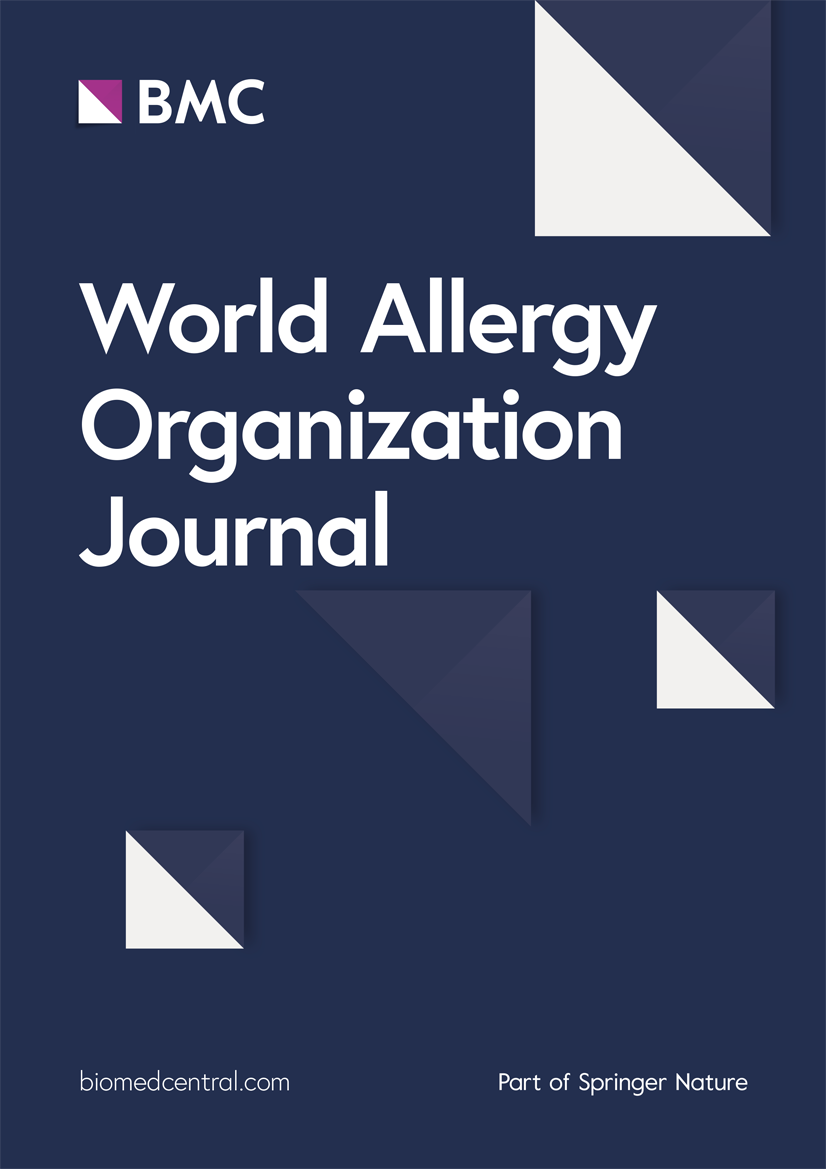ige介导的食物过敏中的生物制剂:介入研究的系统回顾和荟萃分析
IF 4.3
2区 医学
Q2 ALLERGY
引用次数: 0
摘要
背景和目的ige介导的食物过敏(FA)是一个主要的卫生保健问题,影响着全世界数百万儿童和成人。FA管理通常包括消除饮食;然而,人们对能够实现个性化最佳方法的替代策略越来越感兴趣。然而,对于管理FA的最佳策略几乎没有共识。本综述旨在评估包括omalizumab (OMA)在内的生物制剂作为单一疗法或与口服免疫疗法(OIT)联合治疗FA的有效性和安全性。方法采用系统评价(SR)和荟萃分析(MA)的方法,检索10个国际电子数据库(从数据库开始至2024年5月)中评估FA患者生物制剂的随机对照试验(rct)。结果是脱敏、食物过敏原耐受剂量增加、持续无反应、不良事件/反应(ARs/ ae)、生活质量(QoL)指标、免疫生物标志物和成本效益。采用随机效应模型对数据进行汇总。采用Cochrane偏倚风险评估研究质量。结果我们纳入了11项随机对照试验,2项来自早期随机对照试验的次要报告和2项美国国家临床试验,共1010名受试者。9个rct为低偏倚风险,3个为中等偏倚风险,1个为高偏倚风险。荟萃分析显示,与安慰剂相比,OMA显著提高了脱敏率,增加了食物耐受阈值(风险比(RR) 2.035, 95% CI: 1.29至3.22,RR 4.90, 95% CI 2.14至11.20)。OMA降低了食物过敏反应的风险(RR = 0.55, 95% CI 0.36至0.85),而没有显著增加皮肤(RR = 1.09, 95% CI 0.45至2.65)或其他不良或严重反应。免疫结果显示超敏反应降低,过敏和炎症反应降低。多食物口服免疫治疗改善了患者和家长的生活质量。然而,没有研究调查生物制剂在FA管理中的成本效益。结论基于现有文献和我们的SR和MA, OMA可推荐用于精心挑选的ige介导的食物过敏患者作为单药治疗。然而,需要解决患者的具体因素,以减少食物引起的过敏反应的风险。OMA联合口服免疫疗法推荐用于牛奶过敏。对于其他食物,我们会根据正在进行的,关于食物过敏的生物制剂的大型随机对照试验的结果来推荐。为了推荐更广泛的适应症,需要更多的研究来评估最佳治疗时间、长期结果和成本效益。本文章由计算机程序翻译,如有差异,请以英文原文为准。
Biologics in IgE-mediated food allergy: A systematic review and meta-analysis of interventional studies
Background and aims
IgE-mediated food allergy (FA) is a major healthcare problem, affecting millions of children and adults worldwide. FA management usually involves elimination diets; however, there is increasing interest in alternative strategies that enable individualized optimal approaches. Yet, there is little consensus on the optimal strategies for managing FA. This review aimed to evaluate the effectiveness and safety of biologics, including omalizumab (OMA), as monotherapy or in combination with oral immunotherapy (OIT), for FA management.
Methods
A systematic review (SR) and meta-analysis (MA) was conducted, searching 10 international electronic databases (from their start to May 2024) for randomized controlled trials (RCTs) assessing biologics in FA patients. The outcomes were desensitization, increased tolerated dose of food allergens, sustained unresponsiveness, adverse events/reactions (ARs/AEs), quality of life (QoL) measures, immunological biomarkers, and cost-effectiveness. Data were pooled using random-effects model. The study quality was assessed by the Cochrane Risk of Bias.
Results
We included 11 RCTs, 2 secondary reports from earlier RCTs and 2 US National Clinical Trials with 1010 participants in total. Nine RCTs were at low, 3 at moderate, and 1 at high risk of bias. Meta-analyses demonstrated that OMA significantly improved desensitization rates and increased food tolerance thresholds compared to placebo (risk ratio (RR) 2.035, 95% CI: 1.29 to 3.22 and RR 4.90, 95% CI 2.14 to 11.20, respectively.) OMA reduced the risk of food allergic reactions (RR 0.55, 95% CI 0.36 to 0.85) without significantly increasing skin (RR = 1.09, 95% CI 0.45 to 2.65) or other adverse or severe reactions. Immunologic outcomes showed decreased hypersensitivity, a lowered allergic and inflammatory response. QoL measures improved for patients and parents with multifood oral immunotherapy. However, no studies investigated the cost-effectiveness of biologics in FA management.
Conclusions
Based on the existing literature and our SR and MA, OMA can be recommended for use in carefully selected patients with IgE-mediated food allergies as monotherapy. However, patient-specific factors need to be addressed to reduce the risk of food-induced allergic reactions. OMA in combination with oral immunotherapy is recommended for cow's milk allergy. For the other foods, it will be recommended based on the results of ongoing, large RCTs in the field of biologics for food allergy. In order to recommend a wider indication for use, more research is needed to evaluate optimal treatment durations, long-term outcomes, and cost-effectiveness.
求助全文
通过发布文献求助,成功后即可免费获取论文全文。
去求助
来源期刊

World Allergy Organization Journal
Immunology and Microbiology-Immunology
CiteScore
9.10
自引率
5.90%
发文量
91
审稿时长
9 weeks
期刊介绍:
The official pubication of the World Allergy Organization, the World Allergy Organization Journal (WAOjournal) publishes original mechanistic, translational, and clinical research on the topics of allergy, asthma, anaphylaxis, and clincial immunology, as well as reviews, guidelines, and position papers that contribute to the improvement of patient care. WAOjournal publishes research on the growth of allergy prevalence within the scope of single countries, country comparisons, and practical global issues and regulations, or threats to the allergy specialty. The Journal invites the submissions of all authors interested in publishing on current global problems in allergy, asthma, anaphylaxis, and immunology. Of particular interest are the immunological consequences of climate change and the subsequent systematic transformations in food habits and their consequences for the allergy/immunology discipline.
 求助内容:
求助内容: 应助结果提醒方式:
应助结果提醒方式:


